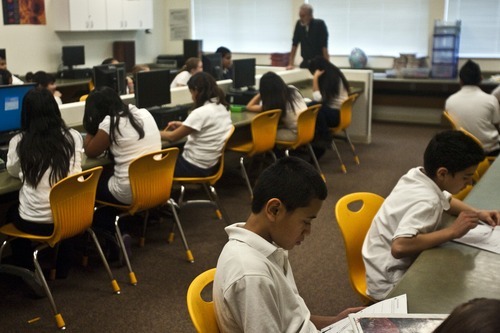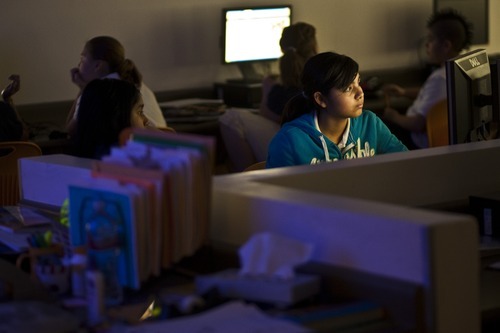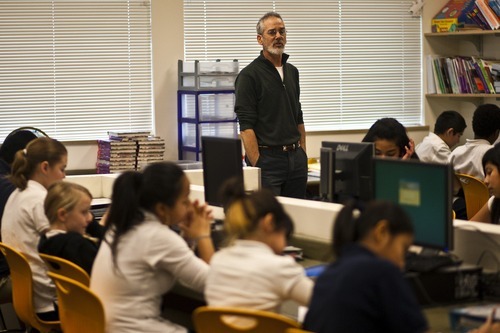This is an archived article that was published on sltrib.com in 2011, and information in the article may be outdated. It is provided only for personal research purposes and may not be reprinted.
More than 13,000 additional students entered Utah classrooms this school year, busting projections and straining school budgets.
Utah's public-school enrollment grew by 2.3 percent to 576,335 students between the falls of 2009 and 2010 and continued to become more diverse, according to data recently released by the State Office of Education. The growth came during a tough year for school districts, which didn't get additional state money to fund the new students. Some schools responded to budget shortfalls by increasing class sizes and cutting school days.
Utah already had the largest student-to-teacher ratio in the nation.
"Obviously, it puts greater pressure onto the programs in the school system to provide that basic education," said Todd Hauber, state associate superintendent, of the growth.
State officials had projected about 11,000 new students this school year. But the actual number exceeded that, likely because of families who moved to Utah from other states and countries, Hauber said.
Pamela Perlich, a senior research economist at the University of Utah, said some of the growth is due to spikes in the number of people who moved to Utah beginning in the mid-1990s. Some of those families' children now are in school.
"People were moving here because we had that humongous construction boom and we were an area of the country with tremendous growth," Perlich said.
But she said most of the enrollment increase is "homegrown." Utah had a baby boom in the early 1960s, and those children had their own children in the early 1980s, resulting in an "echo boom." Those "echo boom" children from the early 1980s then had their own children, who are now entering the school system, Perlich said.
And Utah schools aren't done growing. The enrollment increases are expected to continue, with 14,754 new students projected for next school year and an additional 17,423 students projected for 2012. Gov. Gary Herbert has said he hopes to see that growth funded for the next school year.
But Utah schools aren't only growing — they are becoming more diverse.
Ethnic-minority students now make up nearly 22 percent of all Utah public-school students, an increase from last school year, though it is difficult to tell by how much because of changes in federal definitions.
In three school districts — Salt Lake City, San Juan and Ogden — white students are in the minority.
Jason Olsen, a Salt Lake district spokesman, said his district has been that way for years and has worked to provide training for teachers, especially in working with students whose first language isn't English. The district requires all new teachers to earn English as a Second Language endorsements.
A typical classroom at Salt Lake City's Glendale Middle School defies stereotypes of Utah. On Wednesday, Latino, black and Pacific Islander sixth-graders sat in front of computers in James Carter's class, learning about animal and plant cells.
Only three of 23 students were white. Statewide, the three largest minority groups in Utah schools are Latinos, Asians and Pacific Islanders. Latino students make up nearly 15 percent of Utah students; Asians 1.8 percent; and Pacific Islanders 1.6 percent.
Carter said he spends a lot of time focusing on science vocabulary for students whose first languages might not be English.
Students speak 33 languages at Glendale.
"We spend a lot of time and energy working with our teachers in professional development so they feel like they can take on the task of working with students who come to us from all over the world," said Glendale Principal John Erlacher.
Charter-school enrollment grew by 17 percent between 2009 and 2010. Nearly 7 percent of all Utah public-school students are now enrolled in charter schools.









